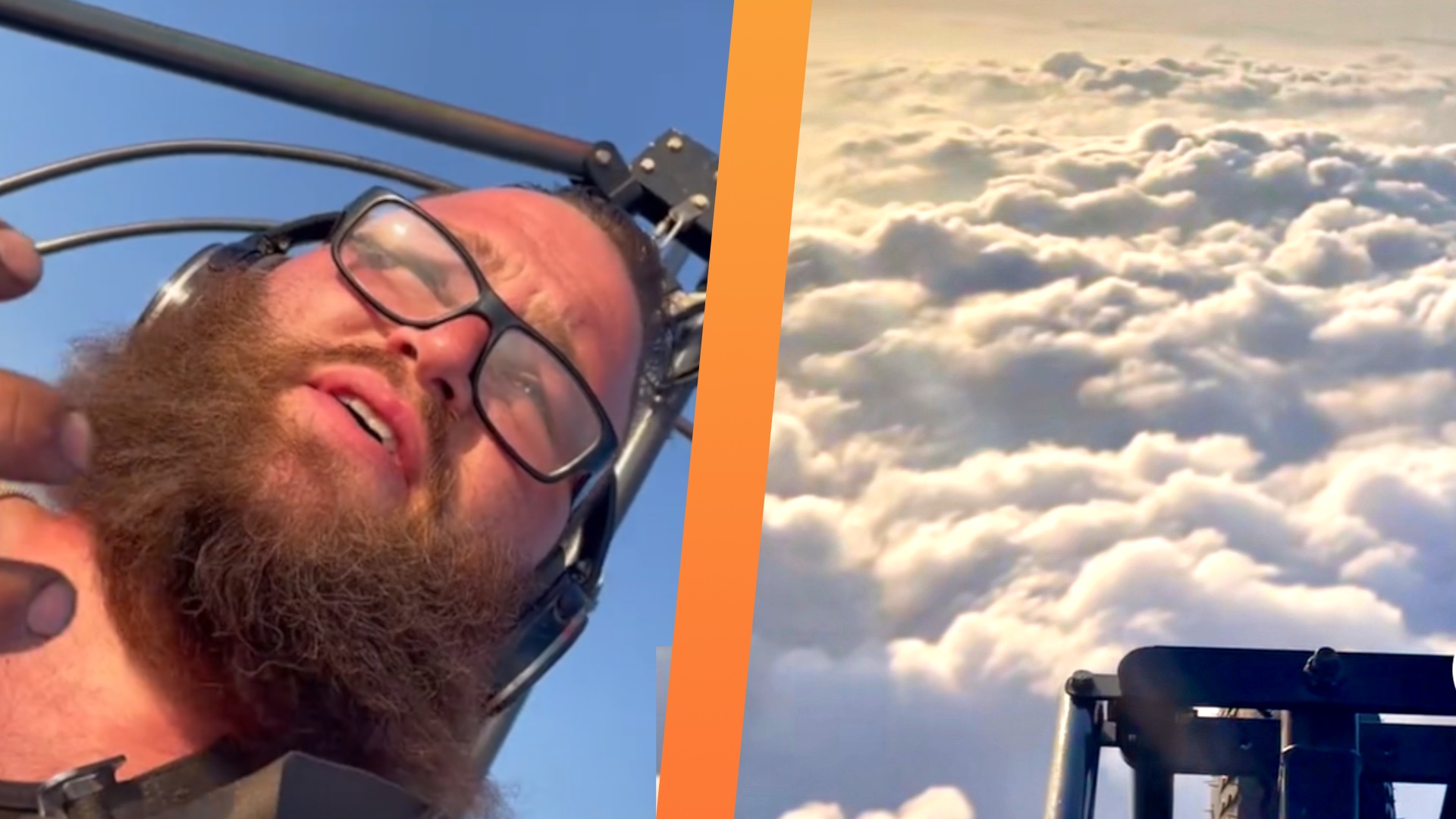

A powered parachute, also known as a PPC, is the result of what happened when someone realized you could couple a parafoil with a paraglider. It allows one to fly without having to jump off of tall things thanks to its small engine, and without relying on thermals (columns of rising air) for additional lift. As demonstrated by @Oliveiron23 on TikTok, it can be a moving and peaceful experience to fly one, albeit with some unique risks.
The powered parachute shown, similarly to the paramotor, relies on a non-rigid airfoil, or parafoil, to generate lift. The parafoil is made of tough fabric and is inflated by the wind, allowing it to hold a lift-generating shape while the PPC is in motion.
Unlike paramotor designs, which are very similar, steering of the PPC is achieved via bars pushed on by the feet, rather than using the hands. A PPC also features a wheeled airframe allowing for plane-like takeoffs and landings. Single-seat PPCs don’t require a pilot’s license to fly by most regulatory bodies and are simple enough to be transported and launched by a pilot operating alone.
The videos shared by @oliveiron23—which we can’t embed directly on this story but you can watch here—show us the joys of these simple, lightweight aircraft. PPCs are excellent at flying low and slow, and runs over the crop fields near the ground are rather exciting to watch. There’s a bit of a scare factor though, too, when it comes to footage of our pilot sitting on a little metal chair thousands of feet above the ground. Perhaps most beautiful, though, are the images shot soaring at over 4,000 feet, with the clouds looking soft and ethereal below.

It’s here where the risks can come in, too, with one video seeing @oliveiron23 point at a small aircraft flying through the cloud line. “This right here is why it’s so dangerous to go through the clouds, cause that guy is [at] probably 1,000, 1,500 feet.” he says. With no radios, radar, or air traffic control, PPC pilots operating in uncontrolled airspace must rely on their eyes and wits to avoid collisions with other aircraft.
Unfortunately, sometimes the worst occurs and collisions do happen. Just last month saw a small plane crash into a paraglider in Texas as reported by Fox 26 Houston, leaving two dead. For such aerial operations, “see and avoid” is often the key measure to averting catastrophe, but such measures can only go so far.
It’s no coincidence that many of the videos on TikTok bear a warning: “The action in this video could result in serious injury.” However, PPC incidents are actually quite rare. Engine-out incidents typically just lead to a careful glide landing, and it’s considered difficult to deflate a wing unless flying in dangerously high winds. Regulations against flying at night also go a long way to reducing crashes into trees, powerlines, and other obstacles.
Overall, flying a PPC can be a glorious, peaceful, and beautiful experience. It just pays to observe the rules and be keenly observant to make the most of what is an exciting and joyful hobby, as @oliveiron23 has shown us.
Got a tip? Let the author know: lewin@thedrive.com